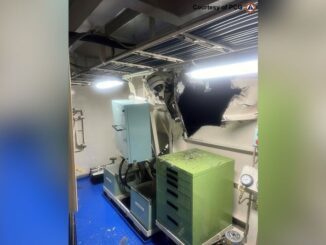
MANILA, Philippines — The Philippines has not ruled out leasing ships from other nations to increase its naval fleet and expand its presence in the contested waters of the West Philippine Sea.
For Alexander Lopez, spokesperson of the National Maritime Council, temporarily borrowing other countries’ vessels could be a “stop-gap” measure as the government looks for funding to purchase its own.
“While we don’t have our own yet, that is an option,” Lopez said in mixed Filipino and English during a televised briefing on Thursday, September 19.
This comes after Sen. Francis Tolentino on Wednesday, September 18, proposed for the government to acquire leased ships instead of purchasing them to save time and cut down on costs.
The chairperson of the Senate special committee on maritime and admiralty zones said it would take at least five years to order and build a new ship, while “leased vessels can be readily acquired and deployed for the use of our personnel.”
“Given that the Philippines is a developing nation, it would be more beneficial to acquire ships leased from foreign countries and companies,” the senator said.
The Philippines had already explored the possibility of leasing foreign vessels before Tolentino’s suggestion, Lopez said.
One of the Philippine Coast Guard’s newest and most modern vessels, the BRP Teresa Magbanua, was pulled out of its five-month deployment at Escoda Shoal on Sunday, September 14.
The vessel returned to port due to bad weather and the need to repair the structural damage it sustained from being repeatedly rammed by Chinese Coast Guard vessels. The ramming incident on Aug. 31 left a man-sized hole on the ship.
The BRP Teresa Magbanua, a 97-meter multirole response vessel constructed in Japan, was procured by the government through a concessional loan from Tokyo in 2022.
Five more similar vessels are on their way to the country after the Philippine government signed a ¥64.3 billion (roughly P29.3 billion) contract with Japan earlier this year. Tokyo will loan the amount to the Philippines through its official development assistance.
An analysis by the United States-based Center for Strategic and International Studies (CSIS) that charted the PCG’s budget for over two decades found that the Coast Guard has increasingly become “awash with funds” under the 19th Congress.
For 2025, the PCG’s requested budget of P31.3 billion is around 6% higher than the funding it received in 2024. If granted, this would be the largest funding for the Coast Guard to date.
Meanwhile, the PCG’s 2024 budget of P29.4 billion is at least four times higher than the funds it received in 2018.
However, despite this, the PCG “continues to trail neighboring coast guards in many respects, even as it faces the most acute threat from [Chinese Coast Guard] coercion,” according to the CSIS.
“Whereas Vietnamese and Chinese maritime agencies have a nearly constant presence throughout the South China Sea, the PCG struggles to maintain an adequate number of patrols,” it said.





Be the first to comment